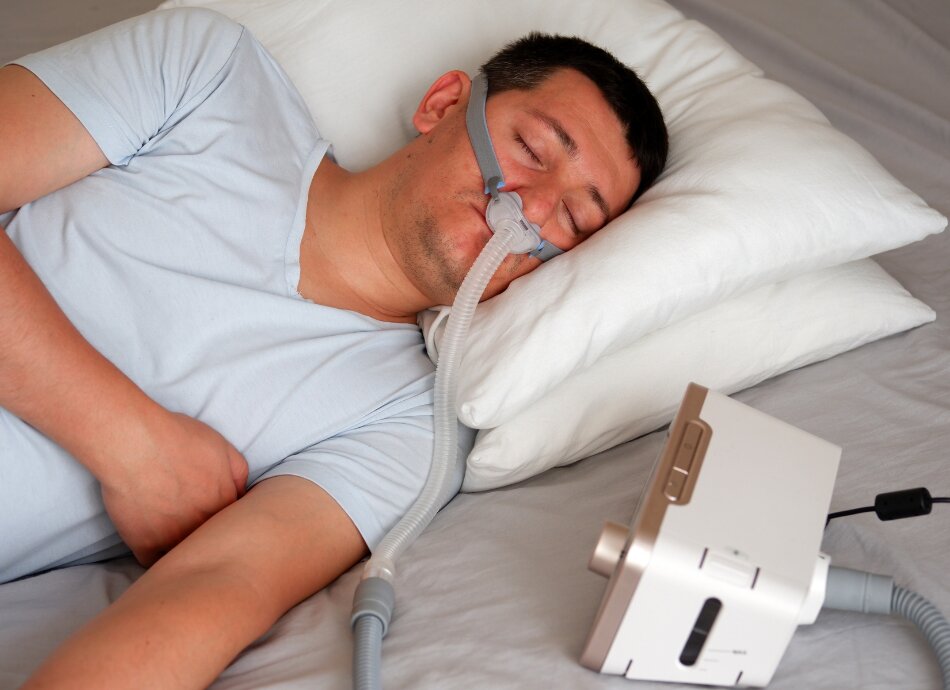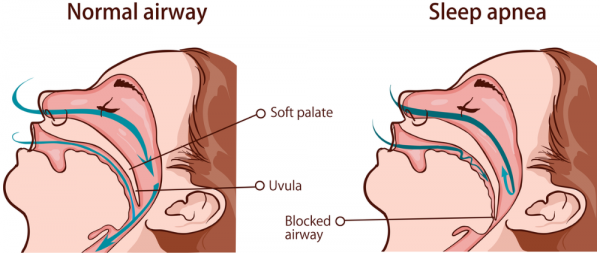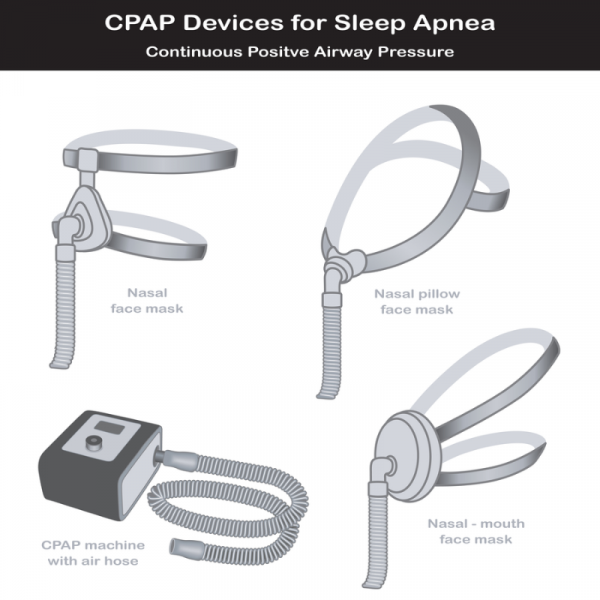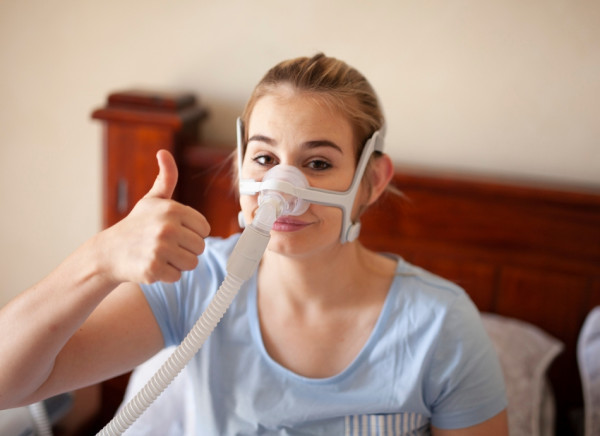Continuous positive airway pressure (CPAP)
Key points about CPAP
- Continuous positive airway pressure (CPAP) is a safe and effective treatment for obstructive sleep apnoea.
- A CPAP machine holds your airway open by gently applying air pressure to your breathing passages at a set level, preventing them from collapsing during breathing.
- Treating obstructive sleep apnoea leads to better quality sleep.
- This can improve how well you function in the day and reduce sleepiness and the risk of some long-term health conditions.

Continuous positive airway pressure (CPAP) is a treatment for obstructive sleep apnoea.
Normally when you go to sleep, your throat muscles hold your airway open. If you have obstructive sleep apnoea, your throat muscles no longer hold your airway open when you're asleep. This allows your airways to narrow and collapse, and you stop breathing for a moment, until your brain wakes you up to begin breathing again. Repeated and frequent interruptions of your sleep and potentially low oxygen levels will impact on your sleep quality. Read more about obstructive sleep apnoea.
The image below shows what happens to your airway when you are sleeping with obstructive sleep apnoea.

Image credit: Depositphotos
CPAP machine
A CPAP machine holds your airway open by gently applying positive pressure to your breathing passages (nose, throat and ‘airways’) at a set pressure. This prevents them from collapsing and will decrease the changes and the pauses in your breathing and help you sleep better. A healthcare provider will set the pressure level for you but a comprehensive review should be done first.
A CPAP machine is not a ventilator. It does not provide supplemental oxygen. Read more about ventilators.
The air pressure is delivered through a mask. Masks come in different shapes and sizes. They may just cover your nose, or both your nose and mouth. The therapist setting the treatment up for you will try to find one with the best fit and comfort level. Image credit: Depositphotos
Image credit: Depositphotos
Note: There is a different condition called central sleep apnoea with similar symptoms but a distinctly different mechanism and different treatment. CPAP is not an effective treatment for this condition.
There are 2 forms of CPAP that have been shown to effectively treat sleep apnoea.
- Fixed CPAP which delivers constant pressure throughout the night.
- Auto-titrating CPAP which adjusts the pressure delivery as you breathe, with generally less pressure when you're in the process of going to sleep and more pressure during deep sleep. Some people prefer this and find it more comfortable than fixed pressure CPAP.
CPAP is a safe and effective treatment for people with obstructive sleep apnoea. You should sleep better after using it throughout your sleep, although it will take some time to get used to the mask and the sound on the machine. Treatment should improve how well you function in the day, with better concentration and improved behaviour in children.
To get the best benefit, you need to use CPAP all night, every night – for the whole time you're asleep.
CPAP is not a cure and sleep apnoea will return if you stop using CPAP or don't use it correctly.
Properly set up CPAP treatment will stop your obstructive sleep apnoea straight away. You might start to feel better on the day after your first night of using it effectively. But some people find it takes a bit longer.
It might take some time for both you and your partner to get used to CPAP. At first, you might not be able to use it for the whole night. This is common, and the main issue is getting used to wearing the mask. The more time you spend using this the better. However, it's better to build up use slowly than to try very hard too early and give up. Be patient with yourself and with the device. Sometimes it may need repeated readjustment of the pressure and/or the mask by your sleep therapist.

Image credit: Canva
CPAP treatment is very safe but it may cause discomfort for some people, such as:
- a dry or stuffy nose
- irritation of the skin on your face
- sore eyes due to air leaking around the mask.
These side effects can usually be prevented or controlled by simple measures such as using a nasal spray or adjusting the size or fit of the mask. It's important not to have your mask strapped too tightly.
Continuous positive airway pressure (CPAP)(external link) Sleep Health Foundation, Australia
Caring for your CPAP equipment (external link) Sleep Health Foundation, Australia
CPAP – making it work for you(external link) Sleep Health Foundation, Australia
Travelling with CPAP(external link) Sleep Health Foundation, Australia
Resources
Long-term CPAP therapy(external link) Health New Zealand | Te Whatu Ora, NZ
Apps
Sleep and snoring apps
Breathing apps
References
- Continuous positive airway pressure (CPAP)(external link) KidsHealth, NZ, 2022
- Obstructive sleep apnoea in adults(external link) BPAC, NZ, 2012
Credits: Healthify editorial team. Healthify is brought to you by Health Navigator Charitable Trust.
Reviewed by: Dr Roland Meyer, Specialist Physician, Respiratory and General Medicine
Last reviewed:





